![]()
![]()
![]()
Use LEFT and RIGHT arrow keys to navigate between flashcards;
Use UP and DOWN arrow keys to flip the card;
H to show hint;
A reads text to speech;
74 Cards in this Set
- Front
- Back
|
Occupancy Theory |
Intensity of pharmacological effect is directly proportional to the number of receptors occupied |
|
|
NOAEL |
The maximum amount of compound administered without adverse reaction |
|
|
Toxicophore |
The part of the molecule that causes toxic effects |
|
|
ED50 |
Dose amount that is maximum effective to 50% of test animals |
|
|
LD50 |
Lethal dose for 50% of test animals |
|
|
Auxophore |
Part of the molecule that does not react with the receptor |
|
|
Pharmacophore |
Part of the molecule that reacts with the molecule |
|
|
SAR |
The relationship between the drug structure and it's effect on the body |
|
|
Lead Modification |
Modification of a molecule to fulfill required clinical usefulness |
|
|
Activity cliff |
Maximum modification of the molecule without loss of desired function |
|
|
Inverse Agonist |
Stimulates opposite response as agonist |
|
|
Agonist |
Stimulates response by receptor |
|
|
Antagonist |
Prevents receptor response |
|
|
Modified occupancy theory |
Accounts for partial agonists |
|
|
Efficacy |
Ability of a drug to produce maximum response |
|
|
4 major drug targets |
1. GPCR 2. Ion Channel 3. Nuclear Receptor 4. RTK |
|
|
2 Fundamental Characteristics of a Receptor |
1. Recognition Capacity 2. Initiation of Biological Response |
|
|
Kd |
Dissociation Constant, Affinity of drug for receptor |
|
|
As a constant decreases, what happens to the Affinity of the drug for the receptor? |
The Affinity increases |
|
|
Intrinsic Sympathomimetic Activity |
The ability of a drug to activate adrenergic receptors that are similar to sympathetic nervous system stimulation |
|
|
Inverse Agonist drug |
Produces the opposite effect of the natural ligand |
|
|
Antagonist drug |
Blocks the response of a natural ligand |
|
|
Agonist drug |
Stimulates the response of a receptor |
|
|
Can agonists and antagonists bind the same site of a receptor? |
Yes |
|
|
Rate theory |
Activation of receptors is proportional to the total number of Encounters of a drug with its receptor per unit time |
|
|
Induced fit Theory |
Agonists induced conformational change antagonists do not induce conformational change |
|
|
Activation aggregation Theory |
The receptor is always in a state of dynamic equilibrium between activated form and inactivated form |
|
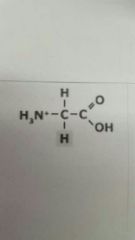
|
Glycene |
|
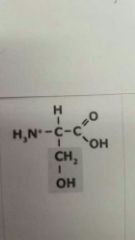
|
Serine |
|
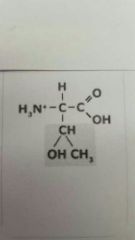
|
Threonine |
|
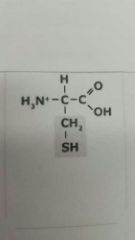
|
Cysteine |
|
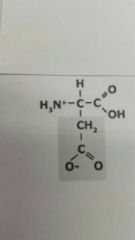
|
Aspartic Acid |
|
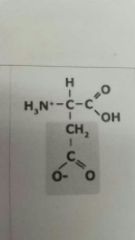
|
Glumatic Acid |
|
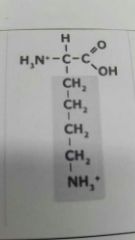
|
Lysine |
|
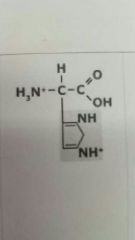
|
Histidine |
|
|
"Rate enhancement by proximity" is also known as: |
"Approximation" |
|
|
Which process is more simple: enzyme purification or receptor purification? |
Enzyme purification |
|
|
What is the symbol for "enzyme-substrate dissemination constant? |
Kd |
|
|
What is the symbol for a catalytic step? |
Kcat |
|
|
Is an ideal enzyme target include an enzyme essential for the patient? |
No |
|
|
What type of bond is associated with"irreversible inhibition"? |
Covalent |
|
|
What symbol represents concentration of 50% enzyme inhibition? |
IC50 |
|
|
What is the effect on enzymes of E.I. formation? |
Prevents substrate binding |
|
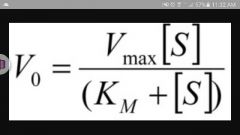
What is the name of this equation? |
Michaelis-Menten Equation |
|
|
What is the symbol for substrate concentration at half-maximum velocity? |
Km |
|
|
What is the ratio of organisms that have mutations that offer drug resistance? |
1:10,000,000 |
|
|
What is mechanism for bacterial transduction? |
Phage |
|
|
A chemical or drug that is metabolized after administration into an active drug |
Prodrug |
|
|
What is changed in bacteria with bactrim resistance? |
A single amino acid |
|
|
Which enzyme is involved in bactrim resistance? |
Dihydrofolate Reductace |
|
|
What in the bacteria is targeted by vancomycin? |
Peptidoglycan |
|
|
What bond is blocked with vancomycin resistance? |
Hydrogen bond |
|
|
How effective is vancomycin resistance? |
1000 fold |
|
|
What enzyme do bacteria produce to counter penicillin? |
Beta-lactimase |
|
|
What Secondary medicine is used to counter beta-lactamase? |
Clavulanic acid |
|
|
8 mechanisms of drug resistance |
1. Altered enzyme/receptor 2. Overproduction of enzyme/receptor 3. Overproduction of substrate/ligand 4. Increase drug-destroying mechanisms 5. Decreased prodrug activation 6. Activation of new pathways circumventing drug action 7. Reversal of drug action 8. Altered drug distribution to the site of action |
|
|
Homologation |
Increasing the length of a chain |
|
|
Ion Channel |
Transmembrane tissue composed of 3 elements |
|
|
What 3 elements is the ion Channel composed of? |
Pore: transit of ion and one or more gates Gates: part of protein open and close in response to stimuli Sensors: receives stimuli |
|
|
Nuclear receptors |
Ligands dependent transcription factors that sense steroid and thyroid hormones, bile acids, fatty acids, and certain vitamins and prostaglandin Regulate gene expression |
|
|
What do Nuclear receptors control? |
Development Differentiation Metabolism Reproduction of Organism |
|
|
What is the site of a drug action receptor |
Any biological molecule with which the drug interacts |
|
|
The site of a drug reaction is responsible for? |
The pharmaceutical effect-- pharmacodynamics |
|
|
Receptors discussed include 4 major drug targets |
GPCRS Ion channels Nuclear Receptors Receptors tyrosine kinases |
|
|
What is the largest class of receptors known |
GPCRS about 800 different human genes, 4% of human genome |
|
|
What are RTKs (receptor tyrosine kinases) |
Subclass of cell-surface growth factor receptors having kinase activity |
|
|
RTKS kinase activity |
Catalyze and transfer of the y-phosphate group from donor which simulates a cascade of signaling pathways |
|
|
RTKS example of catalyze transfer |
ATP top hydroxyl groups of tyrosine residue of target proteins |
|
|
What controls the most fundamental cellular processes |
RTKS (receptor tyrosine kinases) |
|
|
What cellular processes do RTKs control |
Cell cycle Cell migration Cell metabolism Survival Carcinogenesis (cell proliferation and differentiation) |
|
|
Two fundamental characteristics of a receptor |
Recognition capacity Amplification |
|
|
Recognition capacity |
Binding of molecules |
|
|
Amplification |
Initiation of biological response |
|
|
Forces in drug reaction complex |
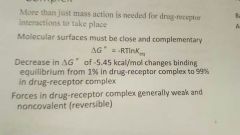
|

